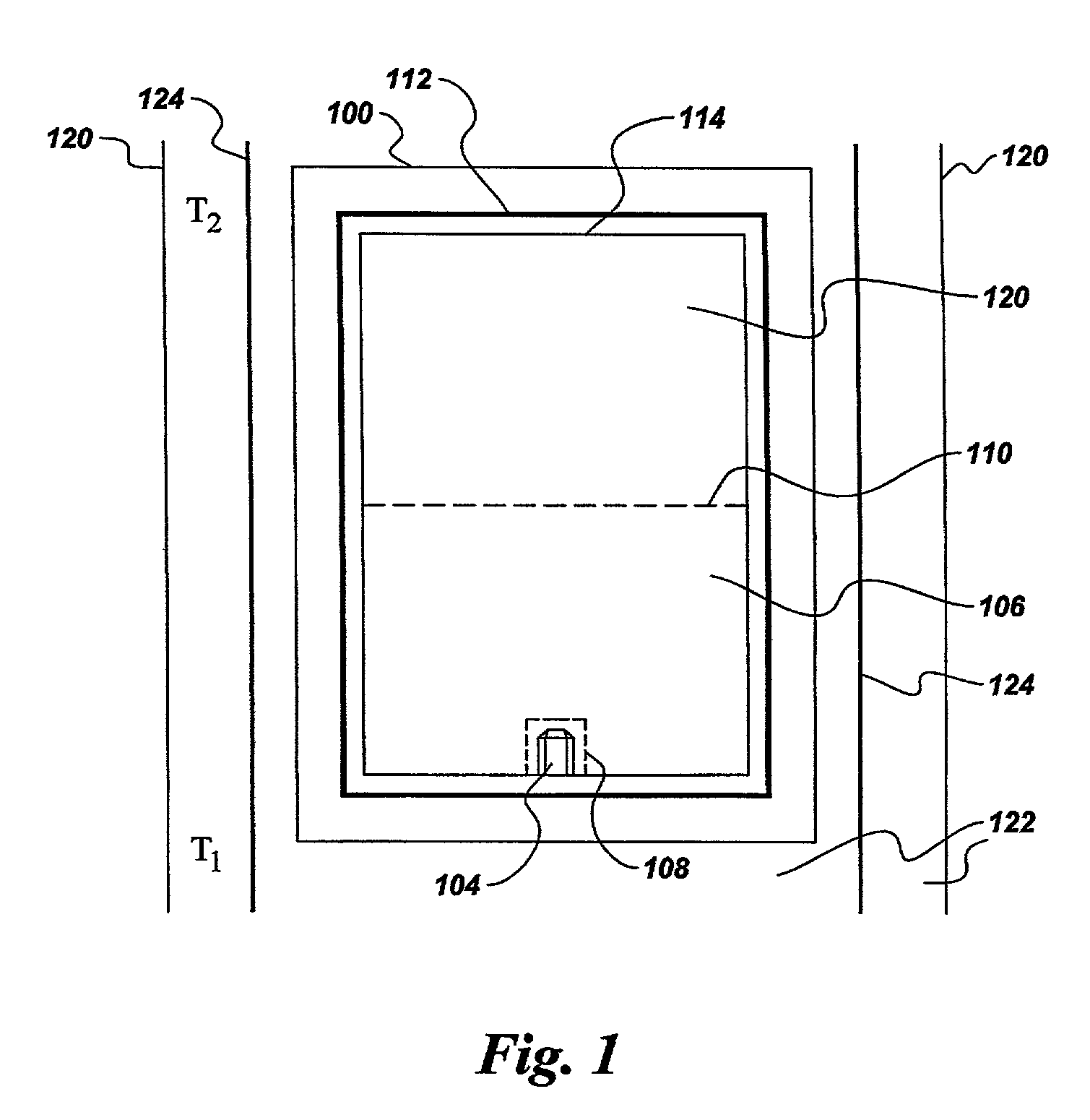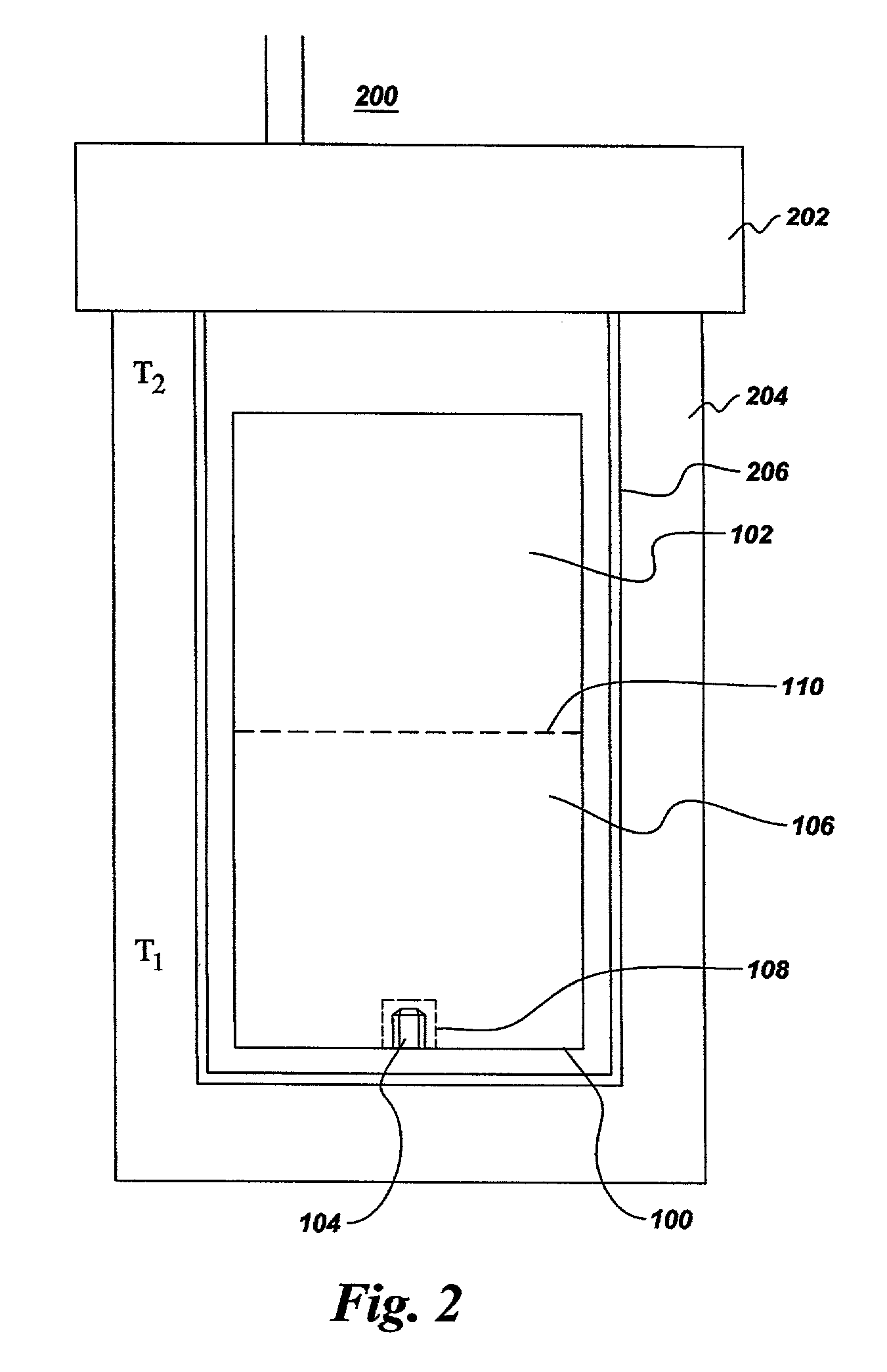High pressure high temperature growth of crystalline group III metal nitrides
- Summary
- Abstract
- Description
- Claims
- Application Information
AI Technical Summary
Benefits of technology
Problems solved by technology
Method used
Image
Examples
example 2
[0035] Commercially available gallium nitride powder, having the same nominal purity and relatively poor crystallinity as described in Example 1, was compacted into a pill weighing about 1.4 g. Ammonium iodide (NH.sub.4I) powder was compacted into a second pill, weighing 2.6 g. The two pills were placed into a reaction vessel comprising two opposing cups fabricated from hot-pressed boron nitride. The reaction vessel was then placed within a cell and treated at high pressure and high temperature in a temperature gradient cell in a belt-type press apparatus. The pressure was approximately 30 kbar. The temperature of the top of the cell was about 1435.degree. C., and the temperature at the bottom of the cell was about 1360.degree. C. After a treatment time of about 20 hours, the cell was cooled and removed from the press. Residual NH.sub.4I was washed out of the cell with water, leaving residual GaN powder and well-crystallized GaN crystals, having an average diameter of about 0.5 mm, ...
example 3
[0036] Gallium nitride powder was compacted into a pill weighing about 1.25 g. A second pill was compacted from a mixture comprising about 2.6 g of ammonium iodide (NH.sub.4I.) powder and about 0.1 g GaN powder. The two pills were placed into a reaction vessel comprising two opposing cups fabricated from hot-pressed boron nitride. The reaction vessel was then placed within a cell and treated at high pressure and high temperature in a temperature gradient cell in a belt-type press apparatus. The pressure was approximately 40 kbar. The temperature of the top of the cell was about 1450.degree. C., and the temperature at the bottom of the cell was about 1375.degree. C. After a treatment time of 24 hr, the cell was cooled and removed from the press. Residual NH.sub.4I was washed out of the cell with water, leaving residual GaN powder and well-crystallized GaN crystals.
example 4
[0037] Gallium nitride powder was compacted into a pill weighing about 1.25 g. A second pill was compacted from a mixture comprising about 2.4 g of ammonium bromide (NH.sub.4Br) powder and about 0.1 g. GaN powder. The two pills were placed into a reaction vessel comprising two opposing cups fabricated from hot-pressed boron nitride. The reaction vessel was then placed within a cell and treated at high pressure and high temperature in a temperature gradient cell in a belt-type press apparatus. The pressure was approximately 40 kbar. The temperature of the top of the cell was about 1330.degree. C., and the temperature at the bottom of the cell was about 1255.degree. C. After a treatment time of about 16 hr, the cell was cooled and removed from the press. Residual NH.sub.4Br was washed out of the cell with water, leaving residual GaN powder and GaN crystals.
PUM
 Login to View More
Login to View More Abstract
Description
Claims
Application Information
 Login to View More
Login to View More - R&D
- Intellectual Property
- Life Sciences
- Materials
- Tech Scout
- Unparalleled Data Quality
- Higher Quality Content
- 60% Fewer Hallucinations
Browse by: Latest US Patents, China's latest patents, Technical Efficacy Thesaurus, Application Domain, Technology Topic, Popular Technical Reports.
© 2025 PatSnap. All rights reserved.Legal|Privacy policy|Modern Slavery Act Transparency Statement|Sitemap|About US| Contact US: help@patsnap.com



